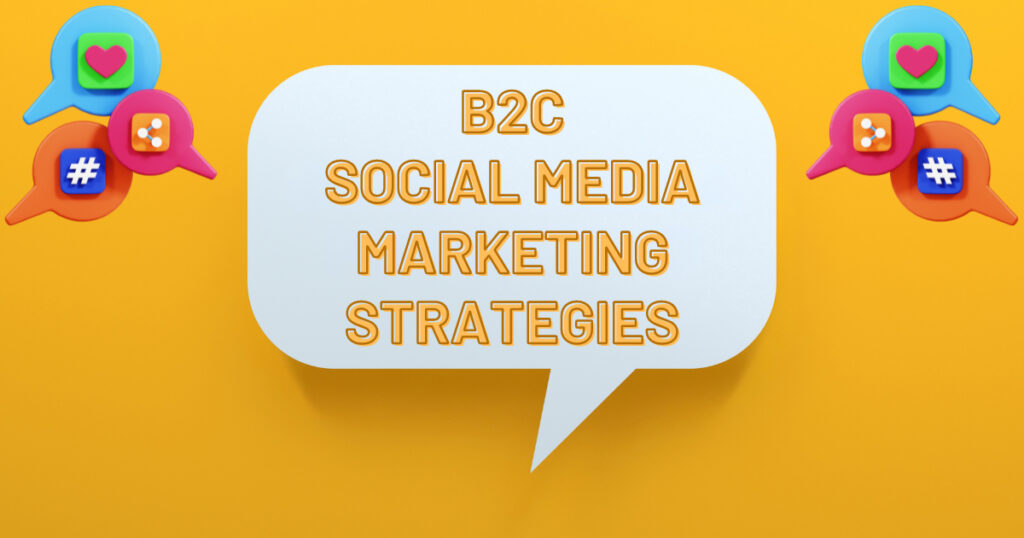
In today's digital age, B2C social media marketing strategies have become an indispensable tool for businesses aiming to reach and engage with their consumer audience. Whether you're a small business or a large corporation, social media platforms like Facebook, Instagram, TikTok, X, and LinkedIn offer unique opportunities to connect with potential customers, build brand awareness, and generate leads.
This article is a continuation of our earlier post titled, Ultimate Guide to Lead Generation Strategies for B2C Businesses, where we highlighted 10 lead generation strategies that you can start doing today to grow your business. In this comprehensive guide, we will explore how you can effectively use these platforms for B2C lead generation, focusing on engaging with your audience and leveraging influencers and brand ambassadors.
Engaging with Your Audience on Different Platforms
Engagement is the cornerstone of successful social media marketing. By actively interacting with your audience, you can build a community around your brand and encourage potential customers to take action.
Using Facebook for B2C Lead Generation
Facebook remains one of the most powerful platforms for B2C marketing. With its vast user base, it provides an excellent opportunity to reach a broad audience.
Types of Content to Post on Facebook
To engage your audience on Facebook, post a variety of content, including:
- Informative Articles: Share blog posts or articles that provide value to your audience.
- Visual Content: Use images and videos to capture attention.
- Interactive Posts: Create polls, quizzes, and ask questions to encourage engagement.
Using Instagram for B2C Lead Generation
Instagram is a visual-centric platform ideal for brands looking to showcase their products and connect with a younger demographic.
Effective Instagram Content Strategies
- High-Quality Images and Videos: Invest in good visuals to make your posts stand out.
- Stories and Reel: Utilize these features to share behind-the-scenes content and short, engaging videos.
- User-Generated Content: Encourage your followers to share their experiences with your products.
TikTok
Leveraging TikTok for B2C Leads
TikTok's short-form video content has taken the social media world by storm, making it an ideal platform for creative marketing.
Creative TikTok Content Ideas
- Challenges: Create branded challenges that encourage user participation.
- Tutorials and How-Tos: Share helpful tips and tutorials related to your products.
- Entertaining Content: Engage users with fun and entertaining videos.
X (formerly Twitter)
Utilizing X for B2C Engagement
X, known for its real-time updates, is perfect for engaging with your audience through short, impactful messages.
Best Practices for Posting on X
- Consistency: Tweet regularly to keep your audience engaged.
- Hashtags: Use relevant hashtags to increase the visibility of your tweets.
- Interactivity: Engage with your followers by responding to comments and mentions.
LinkedIn's Role in B2C Marketing
While primarily seen as a B2B platform, LinkedIn also offers opportunities for B2C marketing, especially for brands targeting professionals.
Strategies for LinkedIn Engagement
- Professional Content: Share industry news, insights, and thought leadership articles.
- Networking: Connect with potential customers and industry influencers.
- LinkedIn Groups: Join and participate in groups related to your industry.
Leveraging Influencers and Brand Ambassadors
Influencer marketing has become a powerful strategy for brands looking to amplify their reach and credibility.
Benefits of Influencer Marketing
Collaborating with influencers allows you to tap into their established trust with followers, driving traffic and leads to your business.
Choosing the Right Influencers
Identifying Relevant Influencers
Find influencers whose audience aligns with your target market. Look for individuals who share similar values and interests as your brand.
Vetting Influencers for Authenticity
Ensure the influencers you choose have genuine engagement and a real connection with their followers. Check their past collaborations and audience interactions.
Collaborating with Influencers
Setting Up Successful Collaborations
Clearly define your goals and expectations. Provide influencers with creative freedom while ensuring they stay aligned with your brand message.
Maximizing ROI from Influencer Partnerships
Track the performance of your influencer campaigns using metrics like engagement rates, website traffic, and lead conversions.
Creating a Social Media Content Plan
A well-structured content plan is essential for maintaining consistency and ensuring your social media efforts are effective.
Importance of Consistency
Consistent posting helps keep your audience engaged and aware of your brand. It also signals to social media algorithms that your content is valuable.
Planning and Scheduling Content
Use tools like content calendars to plan and schedule your posts in advance. This helps you stay organized and ensures a steady flow of content.
Using Analytics to Improve Strategy
Regularly analyze your social media performance using platform-specific analytics tools. Use the insights to refine your content strategy and improve engagement.
Utilizing Stories and Live Features
Stories and live features are excellent tools for engaging your audience in real-time and showcasing your brand's authenticity.
Engaging Audiences with Stories
Stories offer a casual and authentic way to connect with your audience. Share behind-the-scenes content, quick updates, and interactive elements like polls and quizzes.
Benefits of Live Streaming
Live streaming allows you to interact with your audience in real-time, answer questions, and provide valuable insights. It creates a sense of immediacy and personal connection.
Tips for Effective Live Sessions
- Promote Your Live Stream: Announce your live sessions in advance to build anticipation.
- Engage with Viewers: Respond to comments and questions during the stream.
- Keep It Interactive: Use features like Q&A sessions and live polls to involve your audience.
Building a Community Around Your Brand
A strong community can turn customers into brand advocates, fostering loyalty and word-of-mouth marketing.
Importance of Community Building
Building a community around your brand helps create a sense of belonging and loyalty among your customers.
Techniques for Fostering a Loyal Following
- Regular Interaction: Engage with your audience regularly through comments, messages, and community posts.
- Exclusive Content: Offer your community exclusive content, deals, and early access to new products.
- Support and Feedback: Encourage feedback and show that you value your customers' opinions.
Encouraging User-Generated Content
User-generated content is a powerful way to showcase customer satisfaction and build trust. Encourage your audience to share their experiences with your products and use branded hashtags.
Interactive Content and Contests
Interactive content and contests can significantly boost engagement and expand your reach.
Benefits of Interactive Content
Interactive content, such as polls, quizzes, and interactive videos, keeps your audience engaged and encourages participation.
Ideas for Social Media Contests
- Photo Contests: Ask your audience to share photos related to your brand.
- Caption Contests: Post a photo and ask followers to come up with the best caption.
- Giveaways: Run giveaways where participants have to like, comment, or share your post to enter.
Encouraging Participation and Shares
Make it easy for your audience to participate and share your content. Offer attractive prizes and ensure the contest rules are clear and straightforward.
Measuring Success and Adjusting Strategy
Regularly measuring the success of your social media campaigns is crucial for continuous improvement.
Key Metrics to Track
- Engagement Rate: Measure likes, comments, shares, and other interactions.
- Reach and Impressions: Track how many people see your content.
- Lead Conversions: Measure how many leads are generated from your social media efforts.
Analyzing Engagement Data
Use analytics tools to gather data on your social media performance. Look for patterns and insights that can help you understand what works and what doesn't.
Adjusting Your Strategy Based on Results
Based on your analysis, make necessary adjustments to your strategy. Focus on the types of content and platforms that yield the best results.
Are You Ready to Unlock Your Business Potential?
Imagine unlocking the secrets to skyrocketing your business growth with proven business strategies. You don't have to imagine anymore—your solution is just a click away.
Click the button below to Download Your Free Ultimate Entrepreneur Starter-Kit and start your journey to business excellence today!
Conclusion
Social media marketing offers unparalleled opportunities for B2C lead generation. By engaging with your audience, leveraging influencers, and creating a consistent content plan, you can build a strong community around your brand and drive meaningful results. Remember to regularly analyze your performance and adjust your strategy to stay ahead in the ever-evolving social media landscape.
FAQs
- What is the best platform for B2C lead generation?
- The best platform depends on your target audience. Facebook and Instagram are generally effective for a broad audience, while TikTok is great for reaching younger demographics.
- How often should I post on social media?
- Consistency is key. Aim to post at least once a day on platforms like Facebook and Instagram. For TikTok and X, multiple posts per day can be beneficial.
- What are some examples of interactive content?
- Examples include polls, quizzes, interactive videos, and live Q&A sessions.
- How do I choose the right influencer for my brand?
- Look for influencers whose audience aligns with your target market and who have genuine engagement with their followers.
- How can I measure the success of my social media campaigns?
- Track metrics such as engagement rate, reach, impressions, and lead conversions. Use analytics tools to gather data and gain insights.

